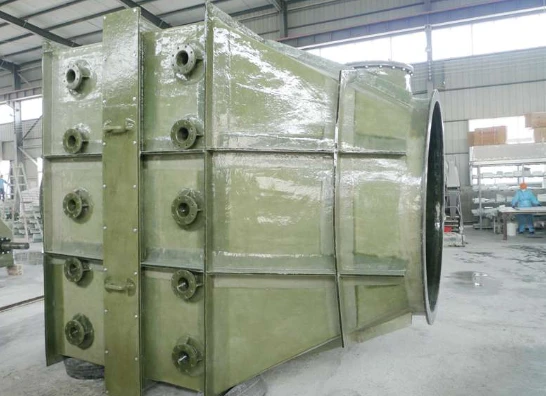
-
 Afrikaans
Afrikaans -
 Albanian
Albanian -
 Amharic
Amharic -
 Arabic
Arabic -
 Armenian
Armenian -
 Azerbaijani
Azerbaijani -
 Basque
Basque -
 Belarusian
Belarusian -
 Bengali
Bengali -
 Bosnian
Bosnian -
 Bulgarian
Bulgarian -
 Catalan
Catalan -
 Cebuano
Cebuano -
 China
China -
 China (Taiwan)
China (Taiwan) -
 Corsican
Corsican -
 Croatian
Croatian -
 Czech
Czech -
 Danish
Danish -
 Dutch
Dutch -
 English
English -
 Esperanto
Esperanto -
 Estonian
Estonian -
 Finnish
Finnish -
 French
French -
 Frisian
Frisian -
 Galician
Galician -
 Georgian
Georgian -
 German
German -
 Greek
Greek -
 Gujarati
Gujarati -
 Haitian Creole
Haitian Creole -
 hausa
hausa -
 hawaiian
hawaiian -
 Hebrew
Hebrew -
 Hindi
Hindi -
 Miao
Miao -
 Hungarian
Hungarian -
 Icelandic
Icelandic -
 igbo
igbo -
 Indonesian
Indonesian -
 irish
irish -
 Italian
Italian -
 Japanese
Japanese -
 Javanese
Javanese -
 Kannada
Kannada -
 kazakh
kazakh -
 Khmer
Khmer -
 Rwandese
Rwandese -
 Korean
Korean -
 Kurdish
Kurdish -
 Kyrgyz
Kyrgyz -
 Lao
Lao -
 Latin
Latin -
 Latvian
Latvian -
 Lithuanian
Lithuanian -
 Luxembourgish
Luxembourgish -
 Macedonian
Macedonian -
 Malgashi
Malgashi -
 Malay
Malay -
 Malayalam
Malayalam -
 Maltese
Maltese -
 Maori
Maori -
 Marathi
Marathi -
 Mongolian
Mongolian -
 Myanmar
Myanmar -
 Nepali
Nepali -
 Norwegian
Norwegian -
 Norwegian
Norwegian -
 Occitan
Occitan -
 Pashto
Pashto -
 Persian
Persian -
 Polish
Polish -
 Portuguese
Portuguese -
 Punjabi
Punjabi -
 Romanian
Romanian -
 Russian
Russian -
 Samoan
Samoan -
 Scottish Gaelic
Scottish Gaelic -
 Serbian
Serbian -
 Sesotho
Sesotho -
 Shona
Shona -
 Sindhi
Sindhi -
 Sinhala
Sinhala -
 Slovak
Slovak -
 Slovenian
Slovenian -
 Somali
Somali -
 Spanish
Spanish -
 Sundanese
Sundanese -
 Swahili
Swahili -
 Swedish
Swedish -
 Tagalog
Tagalog -
 Tajik
Tajik -
 Tamil
Tamil -
 Tatar
Tatar -
 Telugu
Telugu -
 Thai
Thai -
 Turkish
Turkish -
 Turkmen
Turkmen -
 Ukrainian
Ukrainian -
 Urdu
Urdu -
 Uighur
Uighur -
 Uzbek
Uzbek -
 Vietnamese
Vietnamese -
 Welsh
Welsh -
 Bantu
Bantu -
 Yiddish
Yiddish -
 Yoruba
Yoruba -
 Zulu
Zulu
High-Performance Fiberglass Dual Lamination Solutions for Enhanced Durability and Strength
The Advantages of Fiberglass Dual Lamination Products
In various engineering and construction applications, the need for materials that offer both durability and versatility is paramount. One innovation that has gained significant attention in recent years is fiberglass dual lamination products. These products combine the strength of fiberglass with advanced lamination techniques to create materials that stand out in terms of performance, endurance, and aesthetic appeal.
Understanding Fiberglass and Dual Lamination
Fiberglass, also known as glass-reinforced plastic (GRP), is a composite material that consists of a plastic matrix reinforced by fine glass fibers. This composite has several desirable properties, including high tensile strength, corrosion resistance, and lightweight characteristics. These features make fiberglass an ideal choice for a range of applications, from construction and automotive parts to marine and aerospace components.
Dual lamination refers to the process of applying two layers of protective or decorative materials over a core substrate layer. This technique enhances the overall properties of the product, providing additional protection and visual appeal. In the case of fiberglass dual lamination, a fiberglass base is often laminated with resin or other materials, resulting in a composite that is not only robust but also aesthetically pleasing.
Key Advantages
1. Increased Durability One of the most significant benefits of fiberglass dual lamination products is their enhanced durability. The dual layers provide an additional barrier against environmental factors such as moisture, UV rays, and physical impacts. This makes fiberglass dual lamination products ideal for outdoor applications, such as signage, facades, and storage tanks.
2. Corrosion Resistance Fiberglass inherently resists many corrosive elements, which is further improved through the lamination process. Industries that deal with harsh chemicals, such as wastewater treatment and chemical processing, often utilize fiberglass dual lamination products for their ability to withstand corrosive environments without compromising structural integrity.
fiberglass dual lamination product

3. Lightweight Nature Compared to metals and other traditional materials, fiberglass dual lamination products are significantly lighter. This characteristic not only simplifies the handling and installation processes but also contributes to higher fuel efficiency in transportation applications, where reduced weight can be a critical factor.
4. Design Flexibility The lamination process allows for a wide range of finishes and textures. Whether businesses are looking for vibrant colors or specific patterns, fiberglass dual lamination products can be customized to meet aesthetic demands. This versatility is especially advantageous in architectural projects, where visual appeal is as important as functionality.
5. Low Maintenance Costs Products made from fiberglass require minimal upkeep compared to traditional materials like wood or metal. Their resistance to rust, rot, and fading reduces the frequency of repairs and replacements, leading to significant cost savings over time.
6. Environmentally Friendly Options Many manufacturers are now producing fiberglass dual lamination products using eco-friendly resins and methods. This not only reduces the carbon footprint associated with production but also appeals to businesses looking to enhance their sustainability practices.
Applications in Various Industries
Fiberglass dual lamination products are used in numerous sectors. In construction, they form the basis for wall panels, roofing systems, and decorative elements that not only look good but also endure the test of time. In the automotive and marine industries, these materials are utilized in manufacturing body panels, boat hulls, and interior components, providing both lightweight solutions and superior strength. The event and marketing industries also benefit from fiberglass dual lamination, as custom signage and displays can be both eye-catching and durable.
Conclusion
With their remarkable combination of strength, durability, and versatility, fiberglass dual lamination products have established themselves as a preferred choice across various industries. As technology advances and the demand for innovative materials grows, the role of fiberglass in enhancing construction and manufacturing applications will only increase. Whether for practical uses or aesthetic appeal, fiberglass dual lamination products represent a forward-thinking approach to material science, paving the way for sustainable innovation and enduring success.









